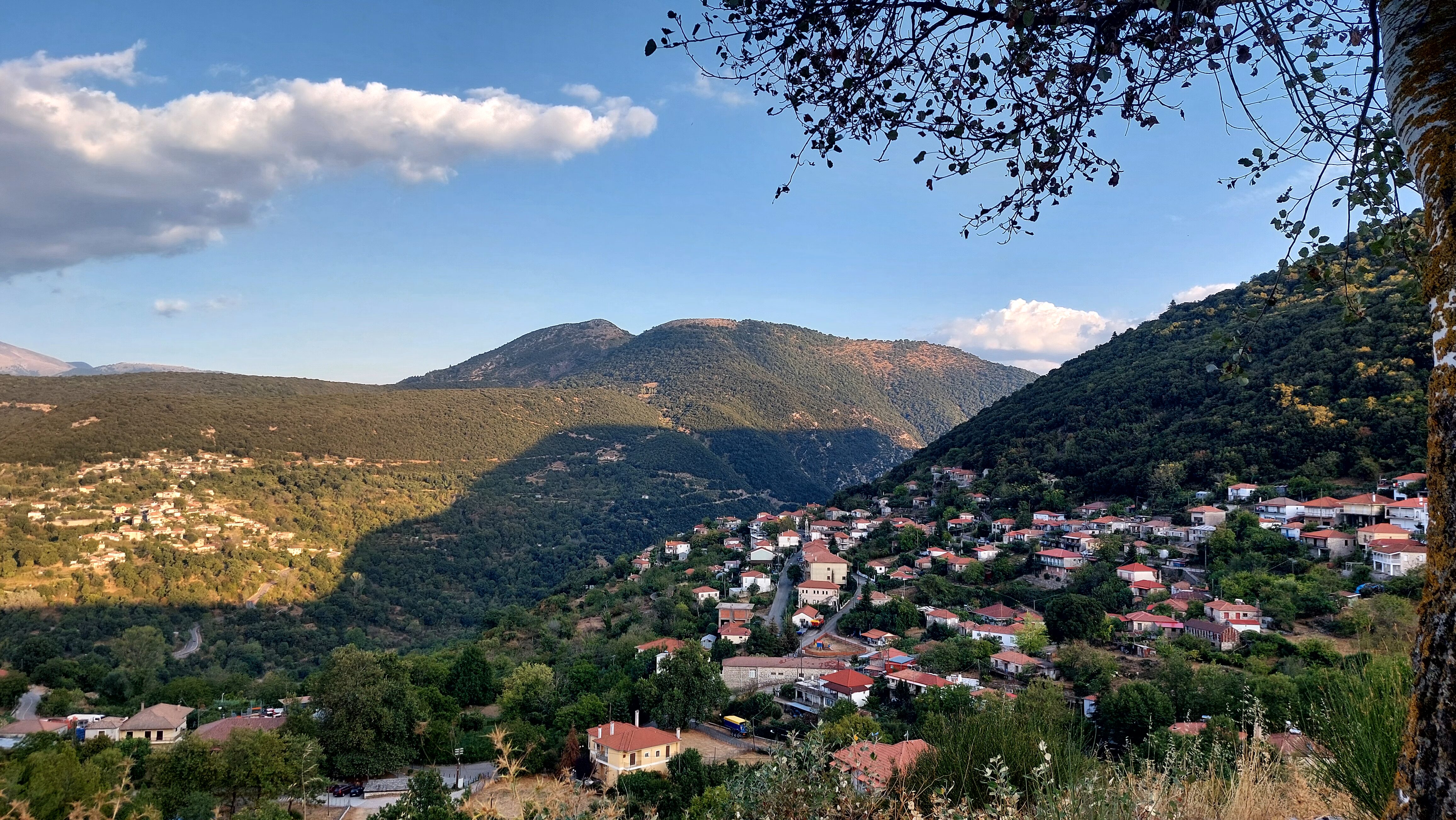Gemistá were among the first dishes I “learned” making from my mother. Not because they’re easy—quite the opposite. Precisely because they call for an extra pair of hands, there was always room for me: to cut the tomatoes and peppers we’d just brought in from the garden, finely chop the mint and parsley, peel the potatoes, measure out the rice. And then came the magic: laying everything in the pan like a puzzle, a riot of color before it transformed into flavor! I remember waiting by the counter for them to cool a little, letting the aromas settle, and then sitting in front of my plate, blowing carefully and breathing in the scent of summer. It remains one of my favorite dishes—if not the favorite—filling and deeply comforting, reminding me that gemistá are a food that feels like an act of care, whether you’re offering them or savoring them. There will always be a friend or neighbor to receive a plate—or a little container—to take home!
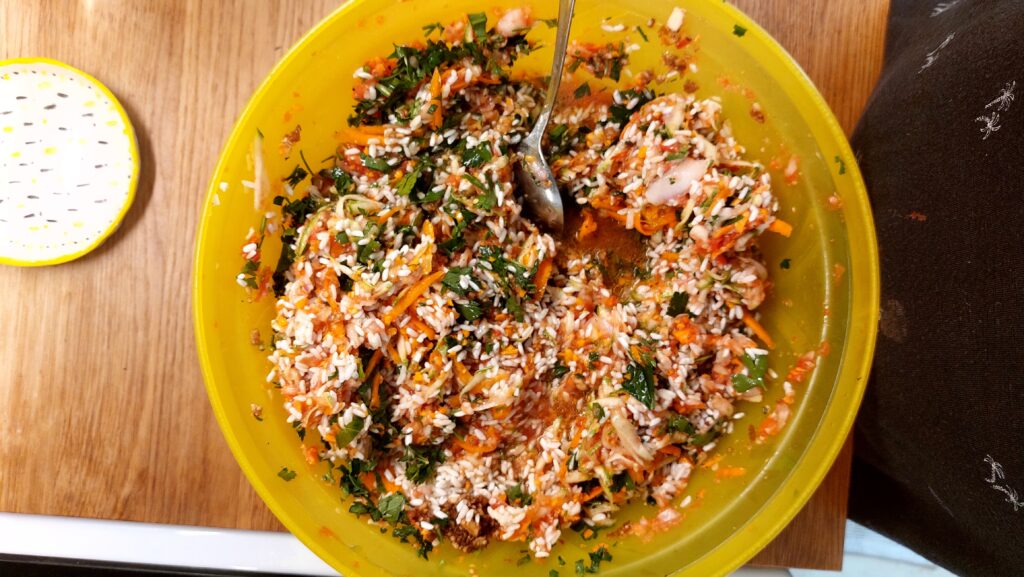
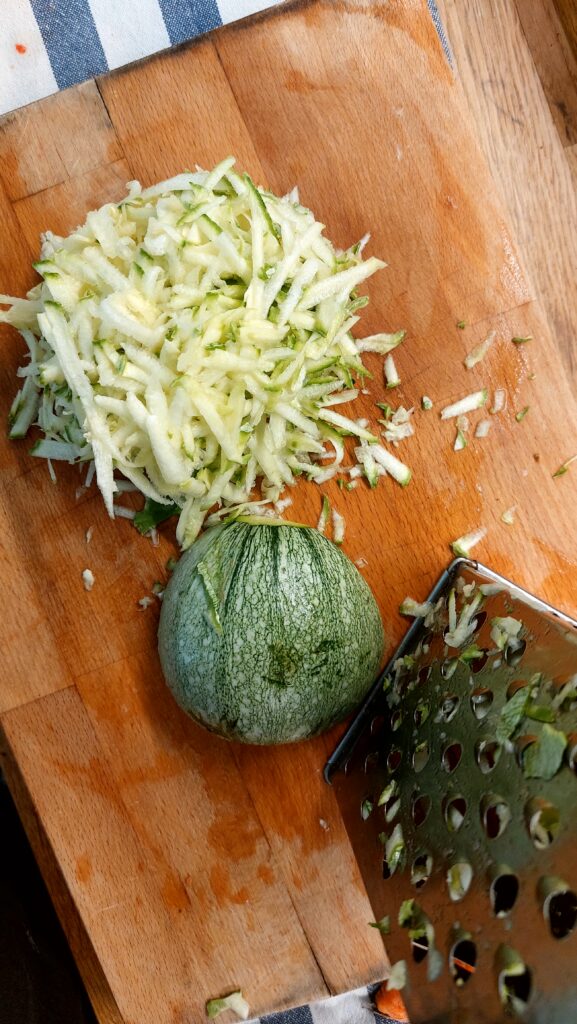

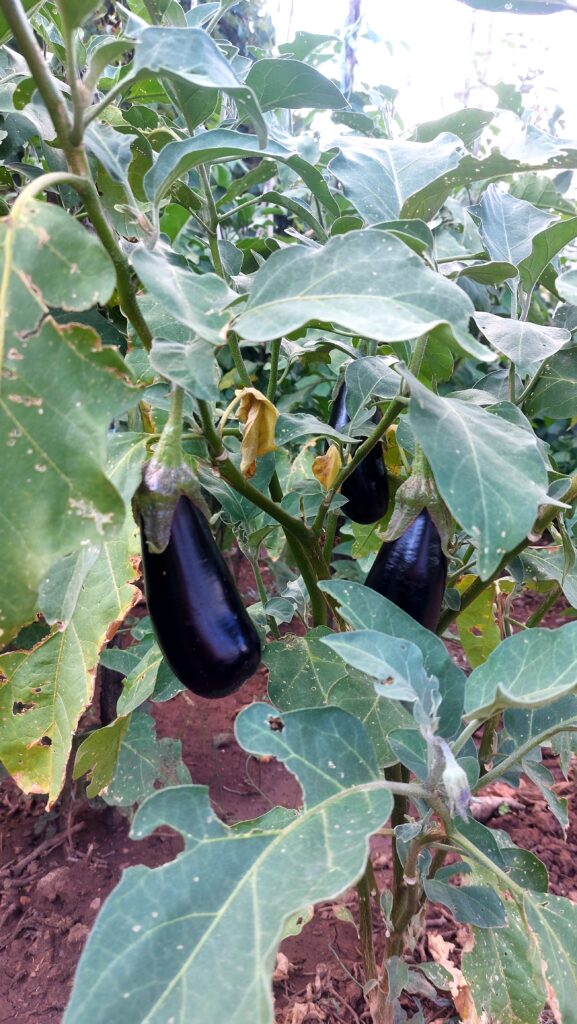
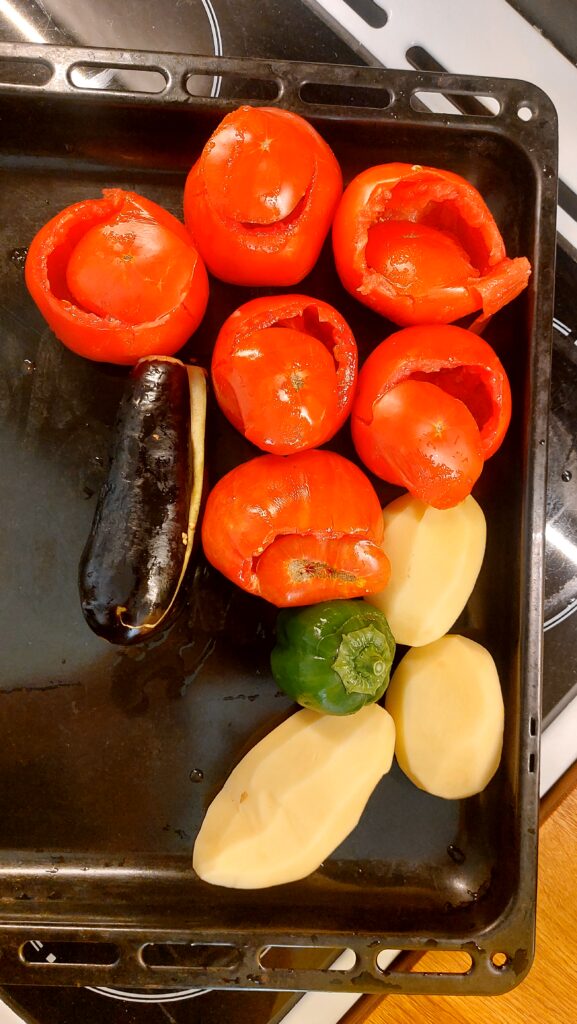
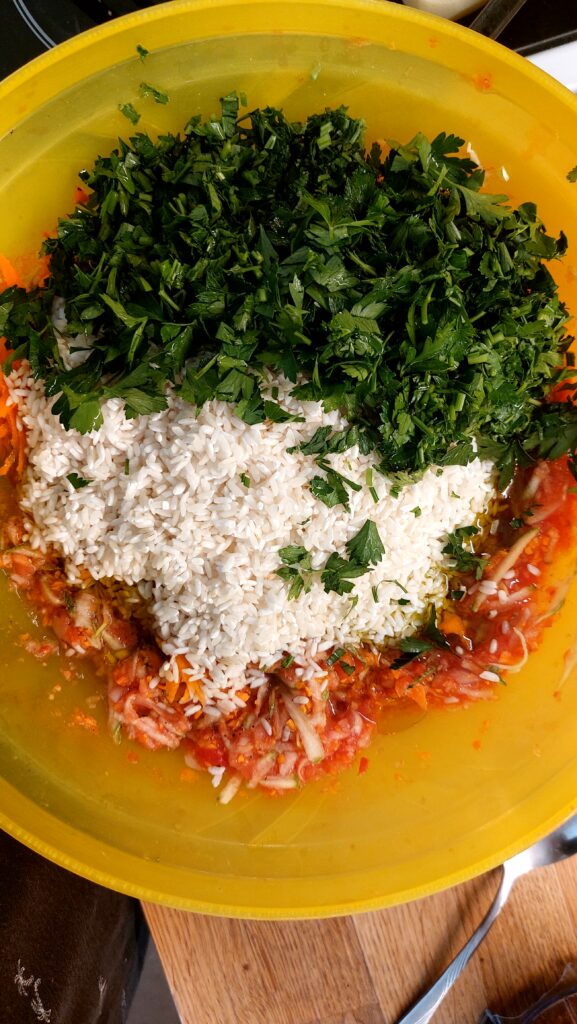
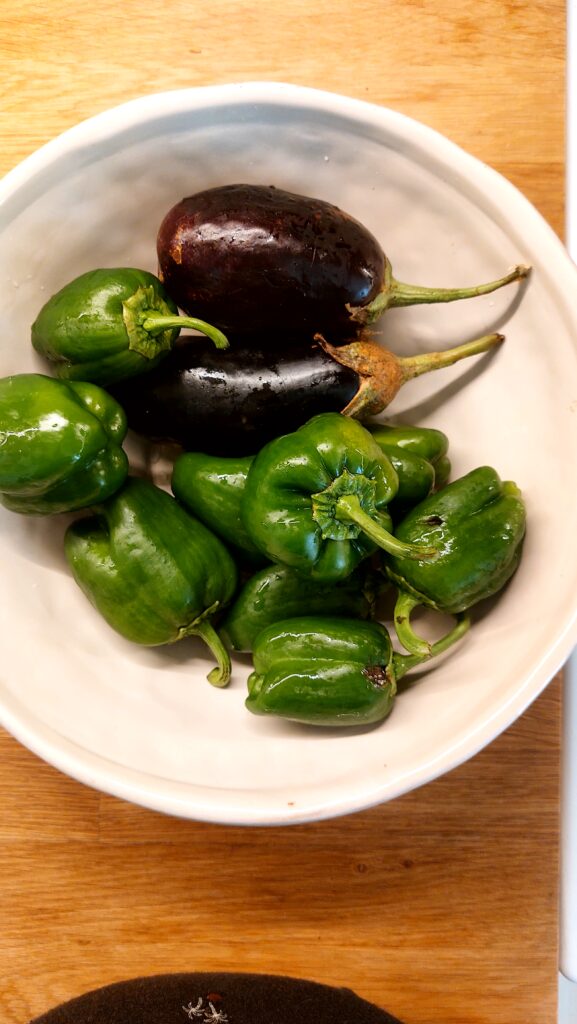
My Essential Secrets
- How many and which vegetables
The filling is built partly from the vegetables’ own flesh. Tomato brings acidity, juice, and sweetness, while pepper lends that signature aroma that makes gemistá taste “homemade.” Personally, I also like to stuff a few eggplants and zucchini—the result is richer. - Keep the “good” insides
Don’t throw away the pale green ring under the pepper’s lid, nor the thin strips from the internal ribs. Finely chop them and add to the filling: they have aromatic intensity no herb can replace. Same with the tomato flesh: grate or finely chop it, but keep all the juices—that’s where the umami hides. - Rice and texture: jammy or separate?
Carolina rice soaks up liquid like a sponge and turns silky, binding the aromas. If you prefer a looser, separate grain, go for long-grain parboiled. Use as a guide ~1½ Tbsp rice per stuffed vegetable. Don’t be tempted to overload the rice: too much will dehydrate; too little leaves the filling watery. Remember: rice keeps absorbing liquid after baking as the dish “rests.” - The salt–sugar–acidity balance
Salt the filling generously (taste it raw: it should be a touch saltier than you’d eat on its own). A pinch of sugar (or about 2 tsp total) won’t make the dish sweet; it reins in the tomato’s acidity and rounds out the flavor. - Herbs with discipline
The classic character of gemistá asks for parsley and mint—the duo that brings freshness and fragrance. Dill and coriander change the profile entirely and pull the dish in another direction. A discreet pinch of dried oregano “locks in” beautifully during baking. - The “loose” rice—pan’s best-kept secret
Spread any leftover filling in the gaps of the pan and cover with slices of eggplant or zucchini. This layer drinks up juices, caramelizes at the edges, and ends up the most coveted bite. If you have potatoes, scatter them all around: they’ll bake in the juices and “bind” the whole. - Filling without pressure & the right headroom
Spoon in the filling without tamping it down. Leave about 1 cm (⅜ in) of space from the rim—the rice will swell. If it’s packed tightly, the lids will lift and the vegetable’s core will dry out. A light sprinkle of breadcrumbs on the lids helps form a crust and keep aromas in. - Seasonality & baking liquids
Summer with juicy tomatoes? No extra liquid needed. Autumn/winter? Make 2–3 tiny holes in the base of each vegetable and add 50 ml water plus a little tomato passata to the pan. The dish will simmer-bake properly without turning into soup. - Olive oil and baking “until it smells heavenly”
Oil isn’t just fat; it’s an aroma carrier. Drizzle some into the filling and over the lids. Bake at 180°C for 1 hour 40 minutes to 2 hours: you want caramelized lids, a silky filling, and potatoes that pierce easily. I prefer the “on the edge” bake, where the peppers darken lightly. - The wait that elevates everything
Let the pan rest at least 20 minutes before serving. The next day, it’s even better: reheat gently at 80°C for 30 minutes or enjoy at room temperature. Hence, always a big pan. Gemistá are one of those dishes that mature beautifully! - Vegetarian with “heft”
Without minced meat, the flavor is clean and aromatic, not sparse. The rice gives body, the potatoes are satisfying, and a slice of good cheese on the side (or a plant-based alternative if you want it vegan) completes the plate. It’s a full meal, not a “side.”
Ingredients (10–12 servings)
- 6 medium green bell peppers
- 6 medium tomatoes
- 4 + 1 eggplants (1 sliced for covering)
- 4 + 1 zucchini (1 sliced for covering)
- 2½ cups rice (or ~1½ Tbsp per stuffed vegetable)
- 2–3 medium onions, finely chopped
- 4–5 potatoes, cut into ~3 cm chunks
- 2–3 carrots, grated
- 2–3 zucchini, grated
- ½ bunch parsley, finely chopped
- ½ bunch mint, finely chopped
- 1 Tbsp dried oregano
- 2 tsp sugar
- 200 ml olive oil (+ a little extra if needed)
- 50 ml water (especially off-season)
- 1 Tbsp fine breadcrumbs
- Salt, pepper
Method (step-by-step)
0. Preheat: Oven to 180°C.
- Pan test: “Set up” tomatoes and peppers in the pan to ensure they fit, leaving space for the potatoes. Wash well.
- Lids & hollowing:
- For tomatoes, cut the lid at the stem end (so the meatier base sits on the pan). Scoop out with a spoon, keeping the flesh in a bowl.
- For peppers, cut the lid high, remove seeds, and keep the flesh and pale “ribs.”
Return the hollowed vegetables to the pan.
- Base sauce for the filling: Grate/finely chop the pepper and tomato flesh and combine in a large bowl.
- The filling: To the bowl add onions, grated carrots, grated zucchini, rice, parsley, mint, oregano, sugar, ¾ of the olive oil, salt & pepper. Mix gently.
- Filling the vegetables: Using a sauce ladle, fill each vegetable without pressing, leaving 1 cm headroom. Spread any leftover filling loosely in the pan gaps and cover with eggplant/zucchini slices. Sprinkle the lids lightly with breadcrumbs.
- Pan assembly: Distribute the potatoes all around. Drizzle with the remaining olive oil (and add 50 ml water + a little tomato sauce if off-season). Season the exteriors with salt and pepper.
- Baking: 1 hour 40 minutes – 2 hours, until the lids take on a lovely color and the insides turn silky. (I leave them close to 2 hours for light caramelization.)
- Rest/Serve: Let stand at least 20 minutes. Even better the next day: warm gently at 80°C for 30 minutes, or serve at room temperature.
Total time: Prep 30–45 minutes + Bake 1 hour 40 minutes – 2 hours
Serving & little joys
- With feta or another white cheese, a drizzle of raw olive oil, and oregano.
- A horiatiki (Greek) or cucumber-tomato salad for freshness.
- On the side: toasted bread to “collect” the pan juices.
Storage
Keeps 4–5 days in the fridge. Reheats beautifully, but is also lovely cold. Hence: always a big pan—gemistá is a dish that ripens.
Why it’s worth it (also as a vegetarian dish)
- Flavor intensity without meat: a pure profile of vegetables & herbs, with umami from tomato/pepper flesh.
- Light yet complete meal: stands on its own, or with a little cheese on the side.
- Made in a big pan: enjoyed hot, warm, or—better yet—the next day.

